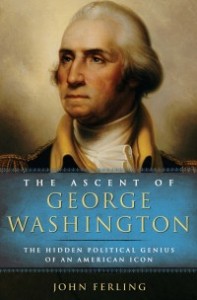By John Ferling
October 19, 1781, the terms for the surrender of the General Charles Cornwallis-led British Army—the Articles of Capitulation—were signed by Cornwallis, Generals George Washington and Jean-Baptiste Rochambeau, and Admiral Francois de Grasse. Rochambeau had led the first French army on American soil since the French and Indian War and played a key role in developing the campaigns that led to Cornwallis’ surrender.
Though two years passed before the September 3, 1783, signing of the Treaty of Paris, Cornwallis’ surrender in 1781 marked the ending of the war. From that point on, the British no longer posed the threat—or wielded the power—of earlier years.
The final act of what Rochambeau had promised would be a calculated operation to compel the British to surrender occurred during the second week of October. Two final British redoubts—Number 9 and Number 10—had to be taken to complete the second parallel. The French were given responsibility for seizing Number 9, the Americans the other. Washington put twenty-four-year-old Colonel Alexander Hamilton, who had been with the Continental army for six years, mostly pulling duty at a desk, in charge of taking Number 10. Hamilton had begged for the assignment. He knew this was likely to be the last great act of the war and his final chance of gaining lasting fame and glory. He led four hundred men against forty-five British defenders. Despite the odds, the ten-minute fight was bloody and feral, hand-to-hand combat waged with the expectation that the losers would not survive the engagement. Hamilton’s force carried the objective. Ten percent of his men were lost in the assault.
Cornwallis knew there was little hope. Perhaps a hurricane—as at Newport in 1778—might strike the Chesapeake and destroy de Grasse’s fleet. Maybe an epidemic would sweep through the allied ranks. Possibly Clinton would cobble together another fleet and send it south to take on de Grasse yet again. Cornwallis made his army endure a bit longer, hoping against hope for a miracle. By October 17, he was out of hope. Under a white flag, he indicated that he was ready to negotiate a settlement.
Rochambeau and Washington were willing to parley, though unwilling to let the negotiations drag on. Given time, things could go wrong, as Cornwallis prayed might be the case. The settlement was reached in less than twenty-four hours. The guns fell silent. Under a cerulean fall sky on October 19, Cornwallis, in the shambles that remained of Yorktown, signed the Articles of Capitulation. A few minutes later, Washington, Rochambeau, and de Grasse, who had come ashore for this grand moment, signed the document while standing on the blood-soaked soil in one of the recently captured redoubts. That afternoon, six and one half years to the day since the first shot of the war had been fired in Lexington, Massachusetts, the armies gathered for the surrender ceremony on an open plain about two thousand yards north of the tents where Rochambeau and Washington had lived for the past few weeks.
With muffled British drums adding solemnity to the occasion, the British and German soldiers marched out and laid down their arms. Though throngs of spectators from Jamestown and Williamsburg, and nearby farms and plantations, had gathered to watch history in the making, the mood was somber.
Cornwallis pleaded illness and did not attend. He vested Brigadier General Charles O’Hara, a veteran of twenty years, with the sad duty of surrendering. Washington, presiding over his first negotiated surrender in more than a decade of soldiering, refused to accept the capitulation from a subordinate of his adversary. O’Hara was made to surrender to General Lincoln, second in command of the Continental army.
Weeks would pass before word of Yorktown crossed the Atlantic, but every man on the field of surrender believed the Revolutionary War was as good as over. This was the long-awaited decisive victory. The stalemate that had lasted since Saratoga was broken. It was inconceivable that the British could continue to fight in the face of the loss of still another army, one slightly larger than that Burgoyne had surrendered four years earlier. Washington’s contribution to the resplendent allied triumph at Yorktown had been nominal. Greene’s brilliant campaign in the Carolinas had put Cornwallis on the road to Virginia’s peninsula, and to perdition. Rochambeau had been the first to conceive the possibility of securing a great victory in the South. Behind Washington’s back, and against the heartfelt wishes of the American commander in chief, he had summoned the French fleet to the Chesapeake. De Grasse had vanquished the royal squadron, which sealed the doom of the trapped enemy. Every step in the systematic reduction of Cornwallis’s army through siegecraft had been planned and directed by the French professionals.
When it was over, Washington publicly thanked Rochambeau for his “cheerfull and able Assistance,” an understated expression of gratitude to the real architect of the allied success. Amazingly, Rochambeau graciously permitted Washington to take credit for the triumph, though doubtless he did so because France, with its vested interest in the preservation of the United States, thought the exaltation of Washington would facilitate its goal. (Much later, when Rochambeau wrote his memoirs, he tried to set the record straight.)
Congress was not told what had transpired behind the scenes at Hartford and Weathersfield in the making of allied strategy. Nor were the congressmen interested in finding out. They were simply ebullient, certain that this “most decisive and important Blow” would at last convince London “of a great truth . . . that is, that America is not to be conquered.” Congress gushed to General Washington its “Thanks . . . for the distinguished services you have rendered to your Country, and particularly for the conquest of Lord Cornwallis.” To that, the president of Congress added that Washington was “no less the Favorite of Heaven than of his Country,” a man and a general who was held “with a peculiar veneration” by Congress for having steadfastly manifested a “Character so eminent for wisdom, courage, and patriotism.”
Some saw Yorktown in a different light. The immediate reaction of John Adams, in Amsterdam,was that Greene’s campaign had been “quite as glorious for the American Arms,” and Adams even hinted that he understood how Greene’s spadework had made possible the “masterly Measure” on the Virginia peninsula. Throughout France, where the major cities were “brilliantly illuminated” over several successive nights to celebrate the allied victory, the emphasis was not on the attributes of any general, but on the “American Character,” which had endured until victory was at last grasped. Wise old Benjamin Franklin in Passy, a tree-covered suburb of Paris, pondered the “glorious News” and saw a string of “rare Circumstances” almost unheard of in history: that “an Expedition so complex . . .should with such perfect Concord be assembled from different Places by Land & Water . . . without the least Retard by cross Accidents of Wind or Weather, or Interruption from the Enemy; and that the Army [of Cornwallis] which was their Object should have the Goodness to quit a Situation from whence it might have escaped [North Carolina], and place itself in another [Yorktown] from whence an Escape was impossible.”
Two years later, in a rare revealing moment, Washington similarly acknowledged that the American triumph in this war was “little short of a standing miracle.”
No one knew the miraculous nature of America’s triumph better than Washington. His strategic vision had been flawed, nearly fatally so, given his obsession with retaking New York. His refusal to consider an invasion of Canada, his personal insecurities that led to defective choices in field commanders, his disregard for the southern theater, his gamble that time was on America’s side and the enemy of Great Britain, all had nearly resulted in an outcome that would have been far less advantageous to America. Had this war ended in something short of a total American victory—as had appeared likely when 1781 dawned and the haunting fear of a European-imposed settlement had seemed all too real—history would see General Washington in a far different light, and one far less commendatory. But in the end, as Washington knew full well and Franklin understood, the miracle of Yorktown gained for Americans a great victory, a majestic triumph that was seen across the new nation as Washington’s victory, won with some help from the French.

Excerpted from The Ascent of George Washington: The Hidden Political Genius of an American Icon by John Ferling.
Copyright © 2009 by John Ferling.
Reprinted with permission of the publisher.
All rights reserved. This work is protected under copyright laws and reproduction is strictly prohibited. Permission to reproduce the material in any manner or medium must be secured from the publisher.
JOHN FERLING is Professor Emeritus of History at the State University of West Georgia. A leading authority on American Revolutionary history, he has appeared in many documentaries and has written numerous books, including The Ascent of George Washington: The Hidden Political Genius of an American Icon, Almost a Miracle: The American Victory in the War for Independence, Adams vs. Jefferson: The Tumultuous Election of 1800, The First of Men: A Life of George Washington, Setting the World Ablaze: Washington, Adams, and Jefferson in the American Revolution, and the award-winning A Leap in the Dark: The Struggle to Create the American Republic.
